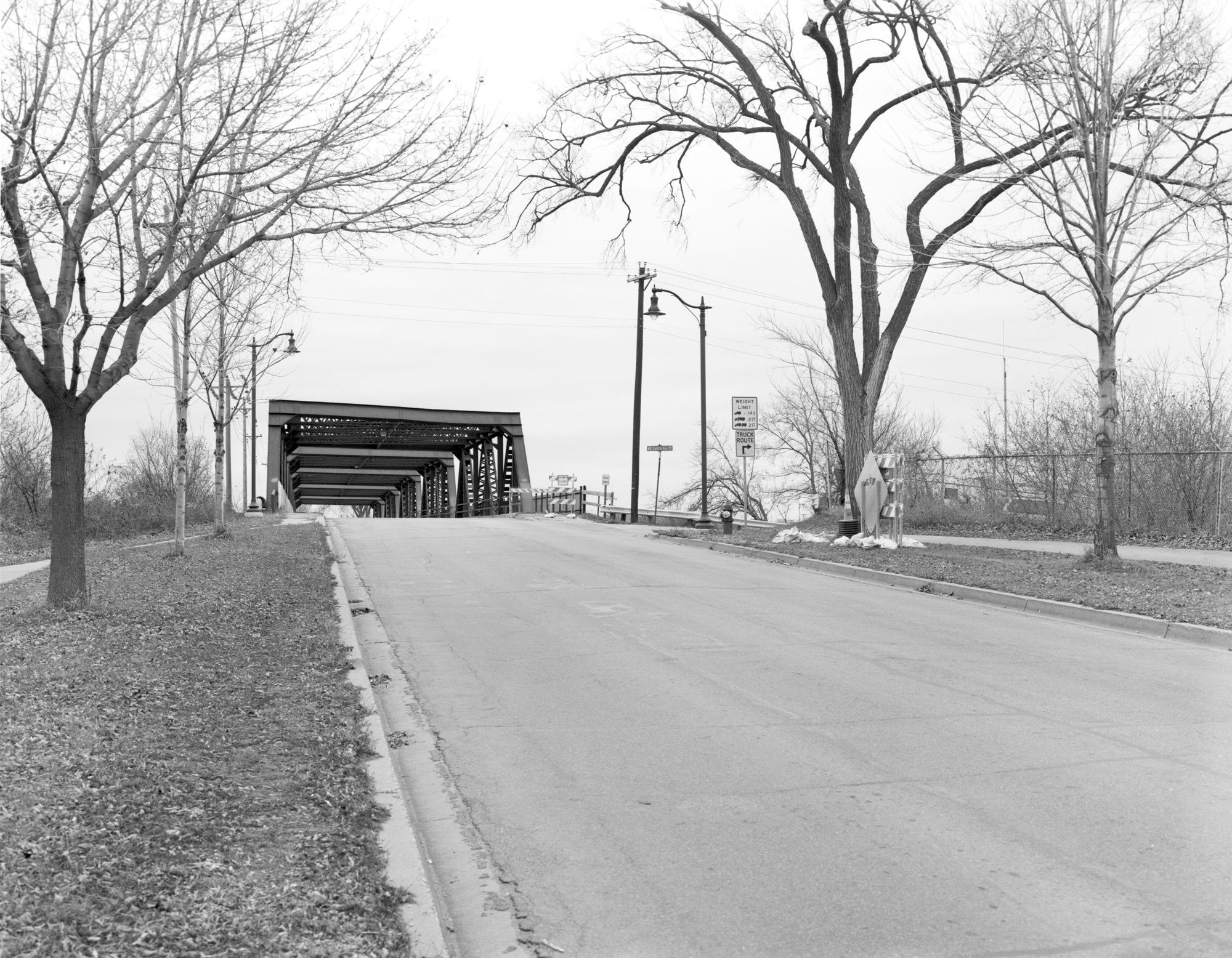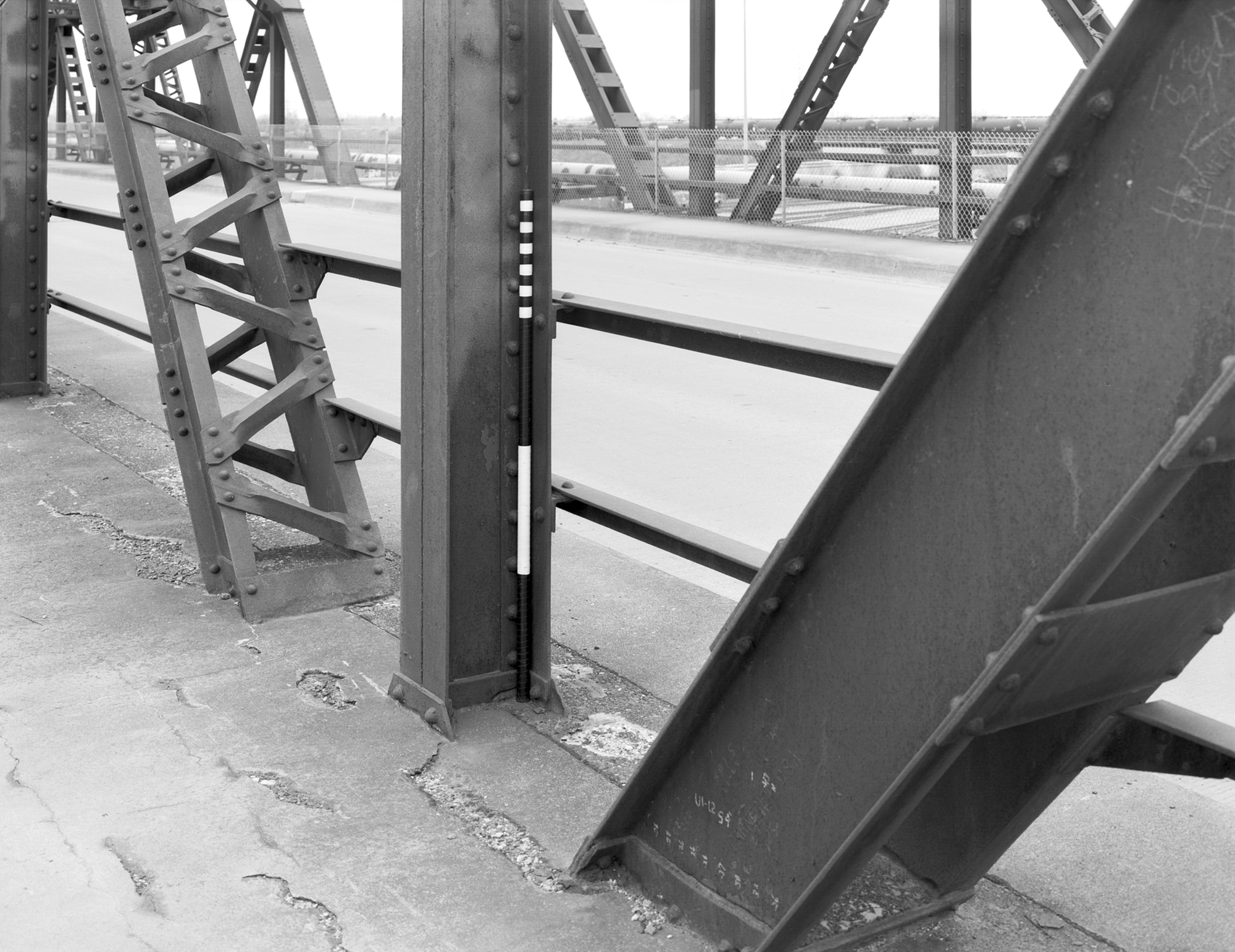St. Anthony Parkway Bridge
(1925)
Minneapolis, Minnesota

The St. Anthony Parkway Bridge was a riveted Warren through truss bridge (HAER MN-122) built in 1925. The bridge had several monikers, including the Northtown Bridge, MnDOT Bridge 90664, and Minneapolis Bridge 9791. Erected by the Northern Pacific Railroad, the bridge carried vehicular and pedestrian traffic over the Northtown Yard of the Burlington Northern Santa Fe Railroad (BNSF).
The bridge was eligible for listing in the National Register of Historic Places (NRHP) under Criterion C for its engineering significance as a rare Warren through truss type. It was also a contributing element of the Minneapolis Grand Rounds Scenic Byway System.
Large format photographic documentation of the bridge to Level I of the Historic American Engineering Record (HAER) was performed for Gemini Research.
Structural details (from http://www.stapbridge.com/existing-bridge/): The 525-foot bridge was a highway “Warren truss” bridge, with five through-truss spans supported on four concrete piers positioned in the rail yard, and concrete abutments at either end. The four eastern spans were approximately 102 feet long and the western most span was 115 feet long. The riveted steel trusses were 37 feet apart and were set at a 27º skew to the substructures.
The bridge’s superstructure consisted of five, skewed, rigid-connected, six-panel, steel Warren through trusses. The truss webs were all identically detailed. Two channel sections with cover plates and lacing bars comprised the truss’s top chord, while two concrete-encased channel sections formed the bottom chords. Vertical members consisted of four angle sections with a web plate; diagonal members were two channel sections with lacing bars; and the overhead sway bracing members consisted of four angle sections with lacing bars. The bridge’s portal bracing included inclined end posts, and relied on paired channel sections, while the overhead sway bracing utilized four angle sections with lacing bars. Riveted gusset plates connected the truss members at the panel points. The flooring system consisted of a floor beam made up of four angles with a web plate riveted to resemble an I-beam (44” built-up, riveted I-section) and S15 x 37.5 stringers, all with riveted connections. The floor beams, stringers, and bottom chord members were concrete encased. The floor beams and stringers supported a concrete deck with a clear roadway width of 27’-0” that carried one lane of traffic in each direction. The north curb (which functioned as a sidewalk) was 5’-8” wide and the south curb was 2’-8” wide. Both curb areas were located on the inside of the truss. A 6’-0” walk was cantilevered on steel brackets off of the south truss. A metal picket railing was located along the fascia of the south walk and a chain link fence was located along the north sidewalk.



